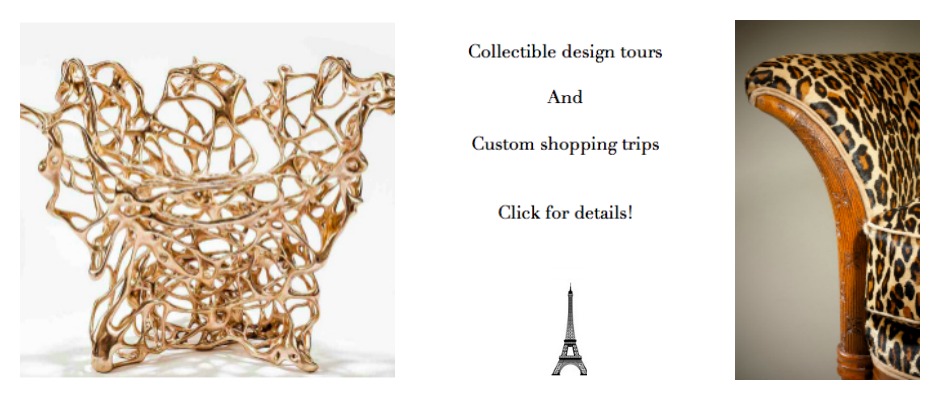
The ‘After’ image! An American desk in elm, 1990s. Revarnished and tinted with vegetable based tint

The ‘before’ image!
This week we spoke with Philippe Bayol of Arz Men Ebenistes and Restorers about the most frequent projects he works on and the common problems he encounters. Philippe is an ébéniste by trade who specialised in the restoration of 20th century furniture 14 years ago. Before that he worked for 10 years mainly on 18th and 19th century furniture.
How did you start working in the restoration field? Having worked with 18th and 19th century furniture for several years, I had the opportunity to work with a gallerist who specialized in 20th century pieces. This was a new period for me and an enriching discovery and definitely gave me a taste for more. The basic techniques are the same but the materials are different. I now do restoration work for about fifteen 20th century galleries, five for whom I principally work.
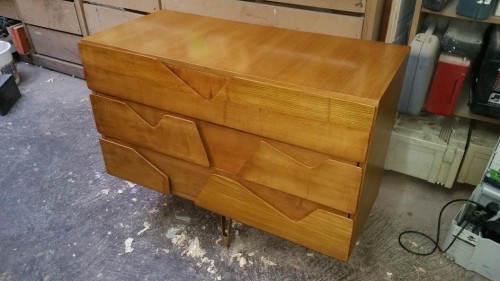
Commode, ash veneer by Gio Ponti, restored by Philippe
What are some common issues you face when it comes to restoring furniture? One of the most frequent restoration projects I work on with 20th century furniture are damages to the wood veneer and the finishes. The veneers on these later pieces are very different from those of 18th and 19th century furniture. The main problem is often the lack of thickness of the veneer which is far thinner and more delicate than that on older pieces. In some instances it is as thin as a cigarette paper. In order to repair the veneer, we need to make sure the substrate beneath is flat (in case that has caused a problem) and the veneer is then very very carefully put in place with a very thin coat of vegetable-based glue. For the finishes on 20th century pieces, these are in 80% of the cases varnish and 20% wax-based finish. These can obviously be gently stripped off and reapplied but the technique has to be very carefully handled and done with a great deal of patience.
Apart from varnish finishes, I also do a fair amount of restoration relacquering of 20th century pieces, particularly French from the 1970s when it was very in mode. The process of relacquering is long as it is done in stages. I start by correctly removing the old lacquer (if the whole piece needs entirely relacquering), fill in any faults in the surface and sand the surface, apply the primer (up to 6 layers, each of which must be sanded), and then apply 6-8 coats of lacquer (with sometimes a light sanding to remove any dust particles). Then in order to get a brilliant surface result I sand the surface with water added to the sanding paper. I use paper with several grain strengths – 360, 600, 1000, 2000, 3000 and 4000. And finally, the last stage is the polishing to get a brilliant shine. The whole process can take from 30 to 200 hours, depending on the size of the piece.
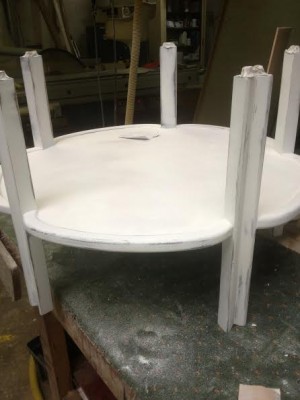
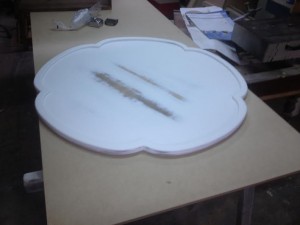

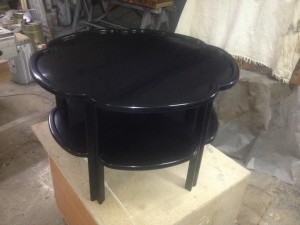
What kind of restoration problems are the most difficult to deal with? There is no one specific problem, but the techniques and aesthetics are very different for pieces depending on where they come from. The region of origin means that pieces are often made of very different woods and consequently need to be treated differently. Scandinavian furniture designers used a lot of teak, mahogany and rosewood, American designers liked American walnut and elm, and a lot of French and Italian pieces are made of European walnut, ash, oak and sycamore. Actually now that I think of it, there is a type of restoration job that is often very difficult and can take a long time to complete. Sometimes people bring me pieces which they have tried to restore themselves at home and they are brought to me when they have either gone too far in their efforts or have simply made mistakes. Then the damage has to be undone before the work can start! Im always very happy to help as people can be distraught when they realize they have made the problem worse, but there is almost always a solution! Restoring furniture is not like painting a wall and requires real training and skill so save yourself the heartache and expense of having to have work undone and started again by finding a real restorer.
What is a particularly satisfying or interesting restoration job on which you have worked? Several pieces over the years have made a strong impression on me but its true that certain Italian ‘meubles d’architects’ have utterly seduced me! In their conception and design, and once restored, they are spectacular. I had the wonderful opportunity once to restore a 19th century Russian piece which was hugely satisfying. Another project which fascinated me was working on a pair of armchairs by the legendary Carlo Bugatti. The marquetry and the mix of materials was absolutely breathtaking. I restored the marquetry and the wood structure and although it was delicate and painstaking work, Bugatti’s technical skill was so remarkable that every moment spent on the chairs was a marvel for me.

Above you see an old very poorly executed restoration on the marquetry of one of the feet. The marquetry has been half covered and this is the state in which Philippe received the chair.

Working on the marquetry and wood structure of the Bugatti chair

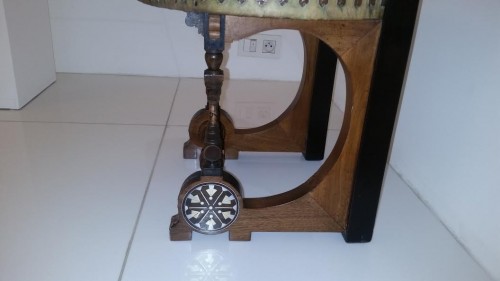
And here’s the chair back in top condition!
Can you give us some tips on preserving the condition of furniture. 20th century furniture suffers, in the same way as 18th and 19th century works, from temperature variations, particularly in homes which are too well heated or the atmosphere is too dry. Exposure to the sunlight is equally harmful and can lead to discoloration and to the detachment of and other damage to, the veneer. In the case of sun damage, 80% of problems are simply a discoloration of the varnish. In these cases we simply carefully remove the varnish, polish the wood and reapply the varnish. However sometimes the decoloration has extended to the wood itself so we would apply a very thin coat of a vegetable based polish in very slow painstaking movements so as to create a totally uniform color and then reapply the varnish. So make sure the room in which you place your pieces is not overheated or too dry and that the pieces are not subjected to direct sunlight for protracted lengths of time. These are the main problems you need to be aware of which can lead to condition problems for your pieces, and with which I am frequently faced!

Pair of low tables by Guy Lefevre, 1970s, relacquered
…..…..…..
Arz Man, Ave Jean Jaurès, 94100 Saint-Maur-des-Fossès, France
Join our mailing list to receive our blog posts and regular art and design updates from Paris and beyond!
Collecting Design Begins in Paris. Come Find your Inspiration!




